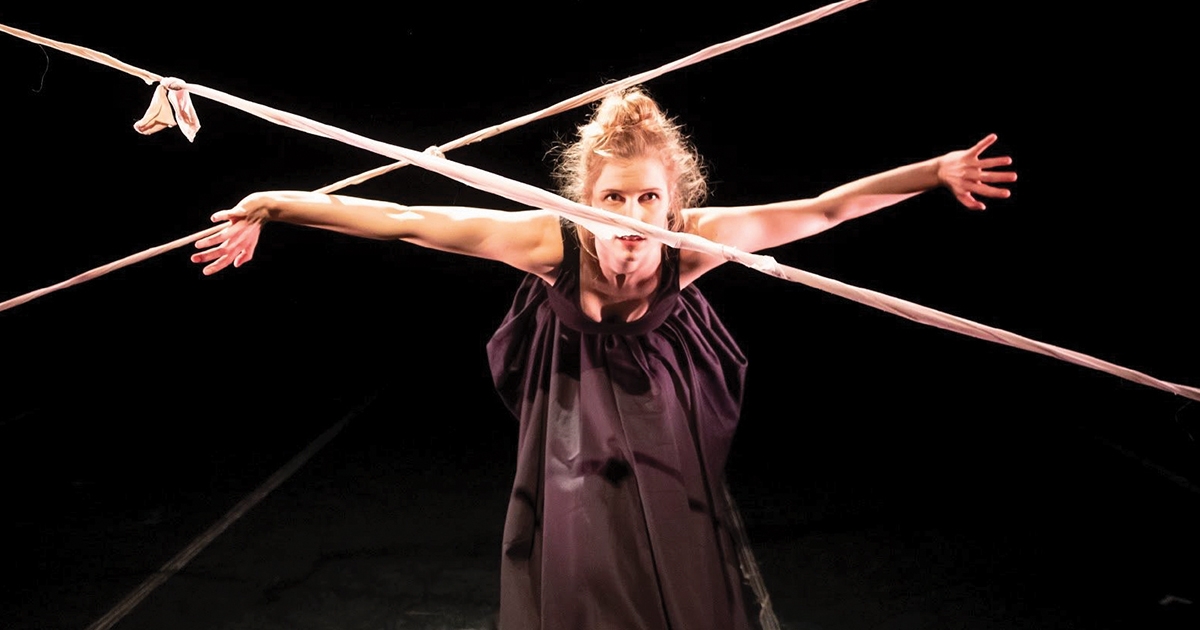When the COVID-19 pandemic hit, galleries and venues went dark. But this month, Avenue for the Arts and a small group of artists and musicians in Grand Rapids will try to bring art back into the light.
Avenue for the Arts, an organization that supports Grand Rapids creatives through resources, exhibition opportunities, and professional development, will present Rapid Art Movement on October 10. The arts event has challenged artists to create pieces that can be displayed “on the move.”
That’s according to Zachary Trebellas, executive director of Avenue for the Arts.
“I think of art as being kind of old-fashioned, because it’s really something where you have to show up in person,” Trebellas told Revue. “It’s a very communal, group activity, which is the strength of art but a weakness during COVID.”
Since the highly contagious coronavirus began to spread throughout West Michigan in early March, Trebellas has attended several “fun responses” and circumventions to physical closeness and crowds.
“I saw a lot of live streams of music performances happening and even three- or four-day-long online music festivals that were put together in Michigan,” Trebellas said. “I think that artists have been trying to find workarounds, but you can’t do everything online — it’s never going to be the same.”
Avenue for the Arts endured a few false near-restarts of the organization’s popular First Friday art walk along the South Division business corridor, but those events were ultimately canceled amid the ups and downs of continued COVID-19 outbreaks.
“We’re trying to be creative about what we do,” Trebellas said. “I have to think like this is much longer term. How can the Avenue do something that works within the constraints rather than waiting for the constraints to lift?”
Rapid Art Movement is a solution that will shift the stagnant experience of a traditional art gallery or concert venue into a flow of constant motion and ever-changing space. Unlike traditional festivals, which give rise to crowds as people flock to specific sites, the event will have no fixed locations. Instead, it will take place as a mass of activity within the mixed-use Monroe North neighborhood of downtown Grand Rapids.
A music performance could take place on one street corner and then move to another, Trebellas said. A piece of artwork might pass a spectator on the sidewalk or an actor may perform a monologue on a bicycle.
“I think it’s the movement that will help dispel crowds,” he said. “I feel like the problem is that crowds will form around a musician or they’ll form around a location where you put something of interest, and then you have a crowd and that’s a problem. If you can have a festival where nothing has a fixed location, I think you will never have a crowd.”
As an experiment in showing art during a pandemic, the event will drive participants and artists alike to think differently.
“The excitement of it is that I don’t really know what it’s going to look like until it happens,” Trebellas said.
“The importance of the festival, for me, is that it’s giving creative people in Grand Rapids an outlet when there are very few outlets — but it’s also giving them a tough challenge.”
The mobility focus of Rapid Art Movement is forming new partnerships among local creatives, Trebellas notes. For example, Gillian Moore, a fine artist accustomed to creating two-dimensional work, has partnered with a local drag performer called Siren.
“Moore is image transferring a lot of her 2D work onto like a 20-foot cape and Siren is going to wear the cape and move throughout the event,” he said. “The idea is they’re supposed to get tangled in things and caught on things.”
The performance will represent the struggle of living with a disability.
“To me, that’s exactly what I was looking for,” Trebellas said. “The idea that someone would push themselves into new terrain and partnerships is something interesting that came of this challenge.”
Whether Rapid Art Movement will be a sustainable path forward for Avenue for the Arts or a model other organizations and artists may build upon remains to be seen. According to Trebellas, however, it’s a meaningful step. It’s a group of people showing a way to make art and see art, for now.
“It’s an opportunity for the public and artists to meet each other and see each other and that hasn’t happened in a while.
“I want those relationships to be strengthened again.”
Learn more at rapidartmovement.co.





